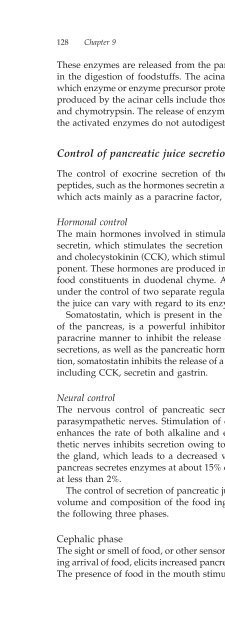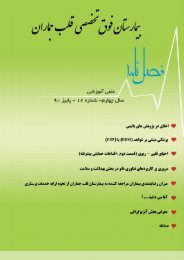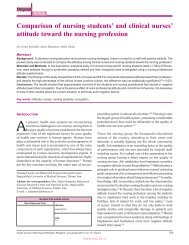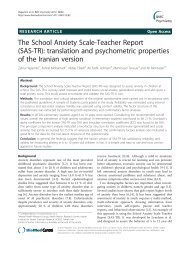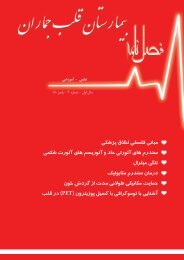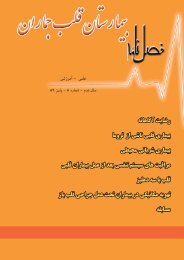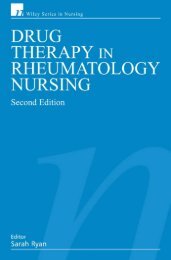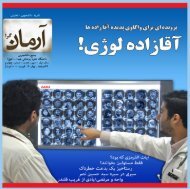Gastrointestinal Nursing.pdf
Gastrointestinal Nursing.pdf
Gastrointestinal Nursing.pdf
Create successful ePaper yourself
Turn your PDF publications into a flip-book with our unique Google optimized e-Paper software.
128 Chapter 9These enzymes are released from the pancreatic acinar cells and are involvedin the digestion of foodstuffs. The acinar cells contain zymogen granules, inwhich enzyme or enzyme precursor proteins are stored. The enzyme precursorsproduced by the acinar cells include those of the proteolytic enzymes, trypsinand chymotrypsin. The release of enzymes as inactive precursors ensures thatthe activated enzymes do not autodigest the lining of pancreatic tissue.Control of pancreatic juice secretionThe control of exocrine secretion of the acinar cells of the pancreas is viapeptides, such as the hormones secretin and cholecystokinin, and somatostatin,which acts mainly as a paracrine factor, and via neurotransmitters.Hormonal controlThe main hormones involved in stimulating secretion of pancreatic juice aresecretin, which stimulates the secretion of the alkaline aqueous component,and cholecystokinin (CCK), which stimulates the secretion of the enzyme component.These hormones are produced in the duodenal mucosa in response tofood constituents in duodenal chyme. As the secretion of pancreatic juice isunder the control of two separate regulatory mechanisms, the composition ofthe juice can vary with regard to its enzyme protein content.Somatostatin, which is present in the delta cells in the islets of Langerhanof the pancreas, is a powerful inhibitor of pancreatic secretion. It acts in aparacrine manner to inhibit the release of the exocrine alkaline and enzymesecretions, as well as the pancreatic hormones insulin and glucagons. In addition,somatostatin inhibits the release of a number of gastrointestinal hormones,including CCK, secretin and gastrin.Neural controlThe nervous control of pancreatic secretions is via both sympathetic andparasympathetic nerves. Stimulation of cholinergic fibres in the vagus nerveenhances the rate of both alkaline and enzyme fluid. Stimulation of sympatheticnerves inhibits secretion owing to vasoconstriction of blood vessels inthe gland, which leads to a decreased volume of juice secreted. At rest, thepancreas secretes enzymes at about 15% of the maximal rate and alkaline juiceat less than 2%.The control of secretion of pancreatic juice during a meal depends upon thevolume and composition of the food ingested. Pancreatic secretions occur inthe following three phases.Cephalic phaseThe sight or smell of food, or other sensory stimuli associated with the impendingarrival of food, elicits increased pancreatic secretion via a conditioned reflex.The presence of food in the mouth stimulates secretion via a non-conditioned


